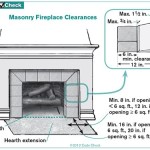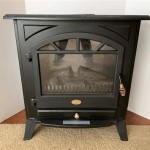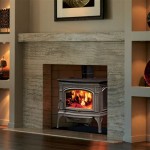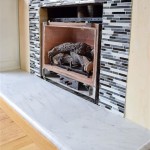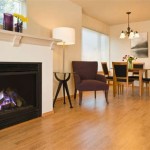Corner Fireplace Designs With TV Above
The combination of a corner fireplace and a television mounted above it presents a complex design challenge. Integrating these two focal points effectively requires careful consideration of aesthetics, functionality, and safety. A poorly executed design can result in discomfort, visual clutter, and even potential damage to electronic equipment. This article explores key aspects to consider when planning a corner fireplace design with a television above, offering practical advice and highlighting potential pitfalls.
Understanding the Challenges: Heat, Viewing Angle, and Aesthetics
The primary challenge in this design lies in managing the heat generated by the fireplace. Televisions are electronic devices sensitive to high temperatures. Prolonged exposure to excessive heat can significantly shorten the lifespan of the TV and potentially damage its internal components. Therefore, mitigating heat exposure is paramount. Furthermore, the viewing angle from various positions in the room needs to be optimized for comfortable viewing. Mounting the TV too high or too low can lead to neck strain and an unsatisfactory viewing experience. Finally, the overall aesthetic must be considered. The fireplace and the television should complement each other and contribute to a cohesive and visually appealing interior design.
The location of the corner fireplace significantly impacts the design options. A corner installation often creates a natural focal point, but it also presents spatial constraints. The size and shape of the room, the placement of windows and doors, and the desired seating arrangement all influence the optimal placement of both the fireplace and the television. Careful planning is essential to ensure that the design is not only aesthetically pleasing but also functional and safe.
Choosing the right type of fireplace is a crucial first step. Gas fireplaces and electric fireplaces generally produce less heat than traditional wood-burning fireplaces, making them more suitable for installations with a television above. Ventless gas fireplaces, while convenient, release moisture into the air, which can potentially damage electronic components over time. Direct vent gas fireplaces are a safer option, as they vent exhaust fumes directly outside. Electric fireplaces offer the advantage of adjustable heat settings or even the option to display flames without producing any heat, making them a particularly appealing choice for this design.
The construction materials surrounding the fireplace also play a role in heat management. Non-combustible materials such as stone, brick, and concrete are ideal for creating a fire-resistant surround. These materials absorb heat and radiate it slowly, helping to prevent excessive heat buildup near the television. Wood framing should be kept a safe distance away from the firebox and properly insulated to prevent combustion. Local building codes often specify minimum clearances and require inspections to ensure compliance with safety standards.
Proper ventilation is another crucial aspect of heat management. A well-ventilated space allows heat to dissipate more quickly, reducing the risk of damage to the television. Consider installing a mantel shelf above the fireplace. This shelf acts as a deflector, directing heat away from the television. The larger the mantel shelf, the more effective it will be at deflecting heat. Adequate ventilation around the television itself is also important. Ensure there is sufficient space behind the TV to allow for airflow. Avoid enclosing the television in a tight cabinet without proper ventilation.
The height at which the television is mounted is a critical factor in ensuring comfortable viewing. A general guideline is to position the center of the screen at eye level when seated. However, this may not be practical when the television is mounted above a fireplace. In such cases, it is generally acceptable to mount the TV slightly higher, but efforts should be made to minimize the upward viewing angle. Consider using a tilting TV mount to angle the screen downward, improving the viewing angle from a lower seated position. Experiment with different mounting heights to find the optimal position that provides the most comfortable viewing experience for the majority of viewers.
The size of the television should be proportional to the size of the room and the viewing distance. A larger TV may be appealing, but if it is too large for the space, it can be overwhelming and uncomfortable to view. Conversely, a television that is too small may be difficult to see from a distance. Use online calculators or consult with a home theater professional to determine the appropriate screen size for your viewing distance. Consider the resolution of the television as well. Higher resolution displays offer sharper images, which are particularly beneficial for larger screens.
Wire management is essential for maintaining a clean and organized appearance. Hide wires within the wall using a wire concealment kit. These kits typically include a conduit or channel that allows you to run wires discreetly from the television to the electrical outlet and other components. Alternatively, you can hire a professional to run wires within the wall. Ensure that all electrical work is performed by a qualified electrician and complies with local electrical codes. Concealing wires not only improves the aesthetics of the installation but also prevents tripping hazards and protects the wires from damage.
Design Considerations: Balancing Style and Functionality
The design of the fireplace surround and the surrounding area should complement the overall style of the room. Choose materials and finishes that coordinate with the existing décor. Consider the color palette, the texture of the materials, and the overall architectural style of the home. For example, a rustic stone fireplace may be appropriate for a log cabin, while a sleek modern fireplace with a minimalist surround may be more suitable for a contemporary home.
Consider the placement of other furniture in the room to ensure that the viewing experience is not obstructed. Avoid placing tall furniture or decorative items in front of the television. Arrange seating in a way that provides optimal viewing angles from all positions in the room. Consider adding accent lighting to enhance the ambiance of the space. Dimmable lights can be used to create a cozy and inviting atmosphere. Avoid placing bright lights directly behind the television, as this can create glare and reduce the contrast of the image.
Integrating the television into the overall design can be achieved through various methods. One approach is to build a custom entertainment center that incorporates the fireplace and the television into a single unit. This allows for seamless integration and provides ample storage space for media components and accessories. Another approach is to use a decorative panel or screen to conceal the television when it is not in use. This can help to minimize the visual impact of the television and create a more cohesive and aesthetically pleasing design.
The use of lighting is also crucial in setting the right mood. Recessed lighting can be used to highlight the fireplace and the surrounding area. Accent lighting can be used to create a warm and inviting atmosphere. Dimmable lights allow you to adjust the brightness of the lighting to suit your needs. Avoid placing bright lights directly behind the television, as this can create glare and reduce the contrast of the image.
When choosing the type of fireplace, consider the long-term maintenance requirements. Wood-burning fireplaces require regular cleaning to remove ash and soot. Gas fireplaces require periodic inspections to ensure that the gas lines and burners are functioning properly. Electric fireplaces require minimal maintenance. Consider the cost of fuel and maintenance when making your decision. Wood is a relatively inexpensive fuel source, but it requires storage space and can be messy. Gas is a more convenient fuel source, but it can be more expensive. Electricity is the most convenient fuel source, but it may be the most expensive, depending on your local electricity rates.
Safety and Installation: Ensuring a Secure and Compliant Setup
Safety is paramount when installing a television above a fireplace. Ensure that all electrical work is performed by a qualified electrician and complies with local electrical codes. Use a surge protector to protect the television from power surges. Do not overload electrical circuits. Install a smoke detector and a carbon monoxide detector in the room. Regularly inspect the fireplace and the surrounding area for any signs of damage or wear. Keep flammable materials away from the fireplace.
The installation process should be carried out by qualified professionals or by individuals with extensive experience in home renovation. Incorrect installation can lead to safety hazards and damage to the television or the fireplace. Consult with a structural engineer to ensure that the wall can support the weight of the fireplace and the television. Use appropriate mounting hardware to securely attach the television to the wall. Follow the manufacturer's instructions carefully when installing the television and the fireplace.
Regular maintenance is essential to ensure the continued safe operation of the fireplace and the television. Clean the fireplace regularly to remove ash and soot. Inspect the gas lines and burners for any signs of leaks or damage. Check the electrical connections for any loose wires or frayed cords. Replace any damaged components immediately. Keep the area around the fireplace clear of clutter. Schedule regular professional inspections of the fireplace and the electrical system.
Consider installing a heat sensor near the television. A heat sensor will alert you if the temperature near the television exceeds a safe level. This can provide an early warning of potential problems and allow you to take corrective action before damage occurs. Heat sensors are relatively inexpensive and easy to install. They can provide an extra layer of protection for your television.
Always consult with local building codes and regulations before beginning any fireplace or television installation project. Building codes vary from region to region and may specify minimum clearances, fire-resistant materials, and other safety requirements. Failing to comply with building codes can result in fines and delays. Obtain necessary permits before starting any work. Schedule inspections to ensure that the installation meets all applicable codes and regulations.

Corner Fireplace With Tv Mounted Above Fireplaces Makeover Gas

Arranging Furniture With A Corner Fireplace Brooklyn Berry Designs

Tv Corner Fireplace Design Ideas S Remodel And Decor Gas Stand

Working With A Corner Fireplace Emily Clark

Tv Over Bedroom Fireplace Design Ideas

How Corner Fireplace Tv Stand Fits For Home Magikflame

Do We Want Tv Above Like This Freestanding Fireplace Mantels Corner Electric

Working With A Corner Fireplace Emily Clark

How To Arrange Furniture With A Corner Fireplace Setting For Four Interiors

Corner Fireplace Ideas How To Design Around An Awkward Feature
Related Posts


